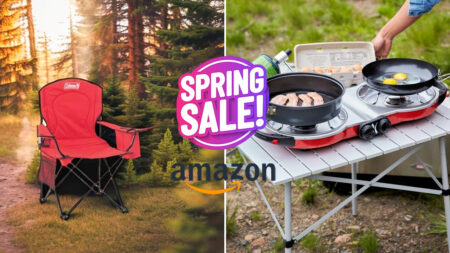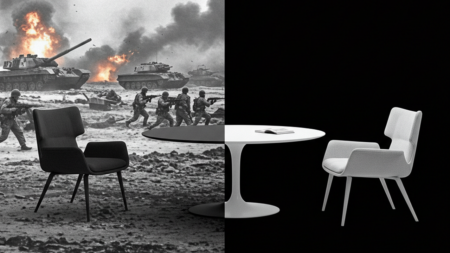While I look forward to the warm season, I get the dislike of many people for the scorching heat and sweat that comes along. But hey, it’s also the time to dive into the pools, so you got no reason to complain. Now, many people don’t have enough backyard space to get a swimming pool, which makes a plunge pool a great feature to add an idyllic spot to cool off when the summer heat comes sweltering down.
A plunge pool is just the thing for people who want to own a swimming pool but do not have the budget or the area for a big water hole. It works well with your modest budget or limited space. Plunge pools are easier and quicker to install while costing significantly lesser than typical backyard pools. Moreover, their compact size allows you to accommodate other coveted features such as a garden, an al-fresco space, a lounge, or a play area.

Before you decide to get a plunge pool installed in your backyard, let’s know more about these stunning summer garden features. This article is a detailed guide discussing everything you need to know about plunge pools – including the advantages and disadvantages, material, cost, size, style, installation considerations, and which one should you choose. So let’s dive deep!
What is a Plunge Pool?
A plunge pool is a smaller, deep pool designed for lounging and wading. Due to their typical small size, these water features are not meant for swimming but they can be used for water aerobics, sitting on pool steps to cool off, or sipping tea in the summer.
Typically labeled as a pool designed with leisure in mind, the term plunge pool is for people who want the aesthetic value of a pool that can be installed in a small yard and fit beautifully into the landscaping. While you cannot enjoy swimming laps in a plunge pool, it does allow you to cool off.
These compact versions of swimming pools can be built in or above ground in a variety of shapes and sizes. Usually, plunge pools are built in sizes ranging from 6.5 feet-10 feet wide and 10 feet-22 feet long. Any bigger than that, it becomes a swimming pool.

Also Read: Pool Safety Guide for Homeowners to Keep Kids Safe
With an amazing capability of turning your backyard into an oasis for relaxation, plunge pools are easier to tuck into a corner, against a planter wall, or integrated into a deck. There are some prefab options that can serve as a cold-water pool for the summer and a hot tub in the winter. Moreover, you have a wide range of materials, sizes, and styles to choose from to better suit your budget and available space.
Popular Materials
The plunge pools are usually made with two popular materials – fiberglass and concrete. Fiberglass is the more popular option as installing it is easier and faster. Besides, fiberglass pools are more affordable, durable, and require low maintenance. But concrete is also a preferred material – it can be delivered in one piece or constructed on-site – and allows the flexibility of partially above-ground or in-ground installation.
Concrete: Concrete has its own advantages when it comes to constructing plunge pools. Plunge pools made from precast concrete are made in a different site, lifted, and transported to the prepared area. You can also have custom ones that are built on-site. They fit nicely in tighter spaces and allow more personalization of the pool design. Concrete plunge pools are energy-efficient and cost-effective.

Fiberglass: Fiberglass plunge pools are another popular choice amongst modern homeowners. These offer a different aesthetic than concrete. The material is durable, long-lasting, and low maintenance. Moreover, it is specifically made to be algae and bacteria-resistant. Fiberglass plunge pools are pre-made before they are transported to the site of installation. They are quicker to install compared to their concrete counterparts.
How Much Does it Cost?
The cost of a plunge pool can vary anywhere between $20,000 and $35,000, depending on what pool type and material you choose along with the customization options. For instance, a kit can average around $20,000 but installation cost on a 300-square-foot pool will add an extra $1,500.
Also Read: Landscaping Types Best Suited for Your Home
An above-ground plunge pool will cost as little as $3,000 and can go as high as $30,000, relying on the size and customizations you opt for the outdoor feature. Choosing an above-ground pool or a precast fiberglass or vinyl insert ground pool is more affordable.
If you opt for an in-ground plunge pool which – while being attractive – is more expensive than its counterparts. These pools can range somewhere between $10,000 to $35,000 with determining factors being the chosen materials, shape, and size of the feature.
Advantages of Plunge Pool
Plunge pools like any other garden feature have their distinct advantages. They are low-maintenance and affordable and offer a relaxing time after a long, hard day. Let’s explore their pros.

Perfect for relaxation
Plunge pools are not meant for dives and swimming laps, they are solely created for relaxation. With several add-ons such as spa jets, swim jets, etc. plunge pools can provide leisurely time right in your backyard and within budget.
Most Affordable Pools
Unlike swimming pools, which require quite a sum to come to life, plunge pools are one of the most affordable and cost-friendly pools. Since they are smaller in size, their installation and maintenance costs are comparatively lesser.
Require Less Space
Finding a large space for a home and garden has become an issue in modern times. Unlike their counterparts, plunge pools do not require a lot of space and they can be placed in all sorts of areas. Space is no constraint when it comes to installing plunge pools.

Numerous Styles to Choose From
There is a wide variety of styles you can choose from when you buy a plunge pool. You have the luxury to take your pick from a number of shapes and sizes including rectangular, oval, circular, square, etc. The style, shape, and size of the plunge pool you install mostly depend on your available area.
Also Read: Koto Wood-Fired Hot Tub is Enticing Scandinavian Addition to Modern Homes
Environmentally-Friendly Features
Given their small size, plunge pools require less water making them eco-friendly in comparison to traditional swimming pools. Moreover, they do not undergo heavy chemical treatments or require much maintenance, further limiting their ecological footprint.

Great for Therapy and Exercise
Plunge pools are usually employed for the therapeutic benefits they offer along with the freedom for light exercise. Aside from their aesthetic appeal, these garden features help reduce muscle inflammation and pain, improve mood, and reduce fatigue. They are also great for light aquatic exercises such as water aerobics.
Disadvantages of Plunge Pool
Despite their numerous benefits, there are several disadvantages to a plunge pool. You must weigh both before you decide to get one for your home. Read on to know more.
Limited in Space
While the space constraint works in favor of smaller gardens and backyards, the limit of it can ruin the summer pool parties you might want to throw for family and friends. Due to its size, you might only be able to fit up to four adults at once without it getting too crowded. It is not even suitable for lap swimming.

Fewer Swimming Possibilities
It does not come as a surprise that plunge pools are not meant for lap swimming as their size does not go beyond 10-22 feet long. The limited length and depth offer fewer swimming possibilities, entirely omitting laps and dives, which is a bigger downside than more people realize.
Lack of Certain Visual Appeal
The visual appeal of a swimming pool is one of the most coveted ones, which cannot be met by a plunge pool. The plunge pools lack the wow factor that comes along with a full-sized swimming pool and might not provide the aesthetic appeal you were hoping for.
Fit Fewer People
Another drawback of the plunge pools is that they fit fewer people at the same time, unlike their counterparts which can accommodate a dozen people simultaneously with ease. Plunge pools can only fit 2-4 people lest it gets crowded, making them unsuitable for fun summer activities such as playing pool games or hosting pool parties.

Also Read: Wood-Fired Hot Tub – How it Works and Things to Consider Before Buying One
In-Ground vs. Above-Ground Plunge Pool: Which to Choose?
The cost of your plunge pool depends on the style and configuration of the water feature. There are several options for configuring the pool.
For instance, an in-ground plunge pool will require excavation, hence increasing the additional costs. Experts suggest that a pool partially above ground, requiring shallower excavation, is the wise decision if you want a sunken plunge pool.
An above-ground pool, on the other hand, is any pool that is installed on the ground surface. It includes a custom concrete plunge pool that sits above ground or one that is constructed in an above-ground deck.

When you are choosing which style plunge pool you should get, you need to consider these options. The plunge pools installed above the ground are typically less expensive and easier to install: but they do not offer the aesthetic appeal of a sunken pool. In-ground pools are more expensive and need more installation work, but they are more beautiful features.
In the end, the choice between in-ground and above-ground plunge pools is determined by your budget.
Follow Homecrux on Google News!




